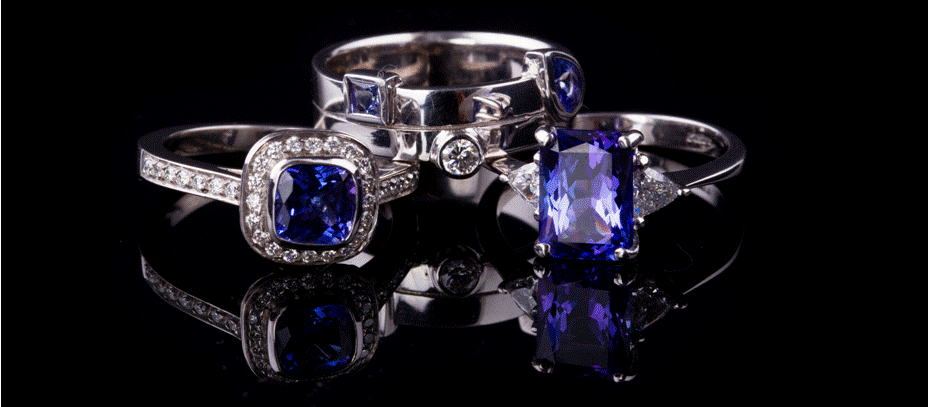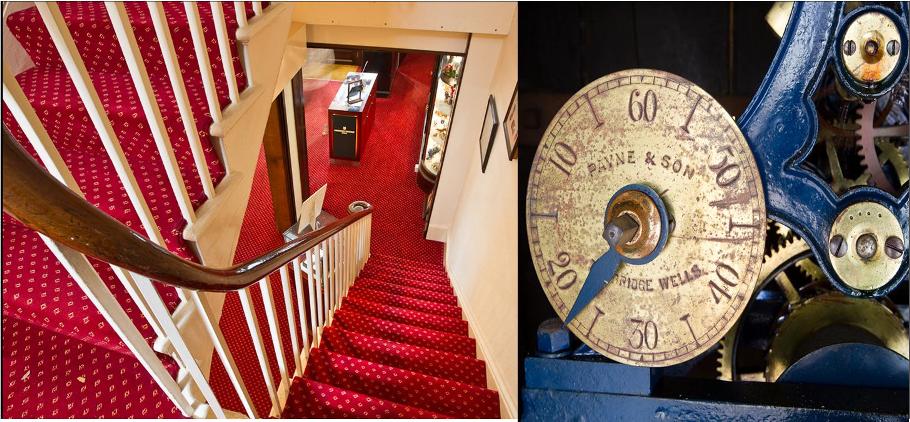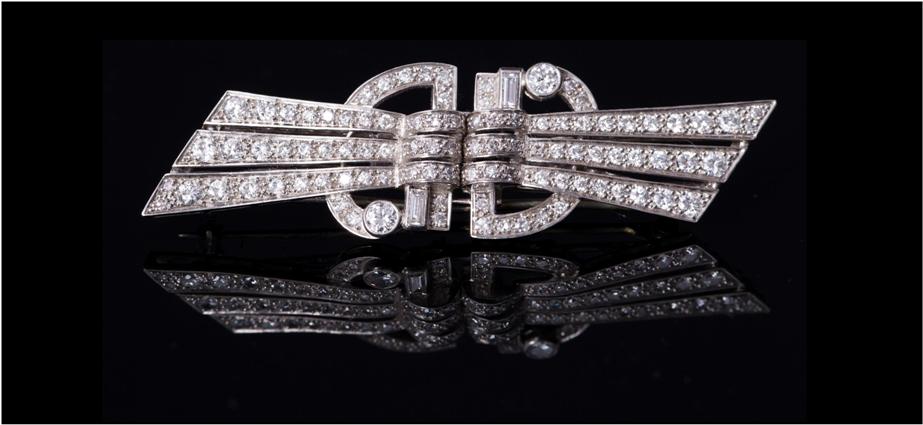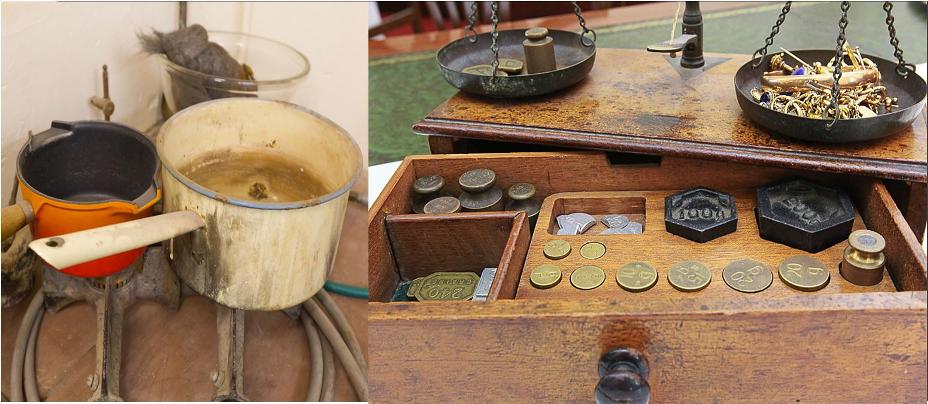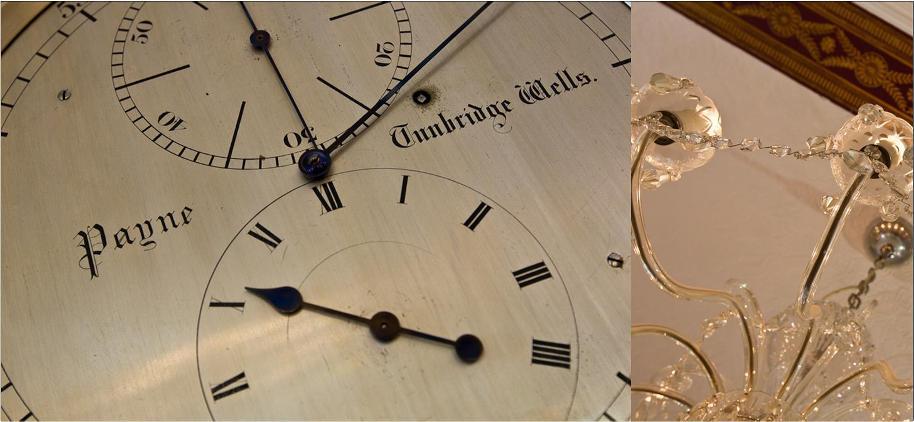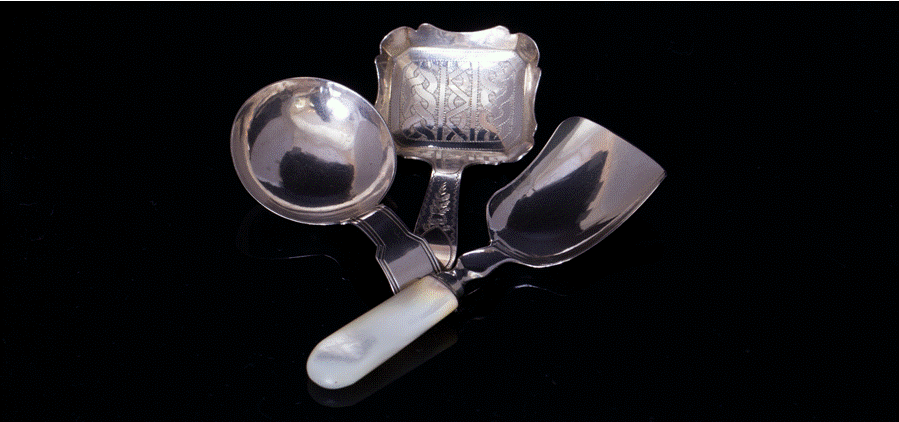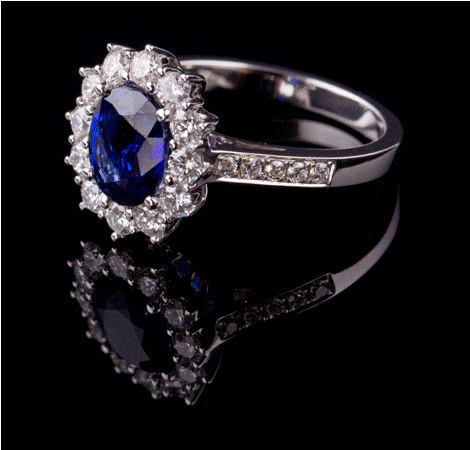 |
Payne & Son, the jewellers and silversmiths of Tunbridge Wells, is run by one of the oldest families of jewellers in England. Indeed the firm can trace its history back to 1790 in Wallingford. Other shops opened in Abingdon in 1825, Banbury in 1841, Tunbridge Wells in 1870 and Oxford in 1889. Today the Payne family is still represented by Michael Payne in Tunbridge Wells, the seventh generation to become a jeweller. The large clock above the shop in Tunbridge Wells High Street is itself a well-known local landmark. Thomas Payne continued as a jeweller and watchmaker until he died in 1886, taking his brother in law Sidney William Allen into partnership in 1884 as his own health was failing. This partnership was commemorated in the old mosaic step at Clock House, which proclaimed the fact that the firm was then also a bureau de change. Thomas's widow Helen Elizabeth continued after his death, dissolving the partnership with Sidney William Allen in 1889. An important commission for Payne & Company was to supply the Mayor's chain and badge of office, when Tunbridge Wells Borough Council was incorporated in 1889. In addition Helen Elizabeth Payne took over the business of William Fry Loof at 26, Ye Pantiles. His father, William Loof, had been a watch and clockmaker in Tunbridge Wells since 1824. The Pantiles shop was closed in 1897 in order that Helen Payne could concentrate on the High Street in her final years. |
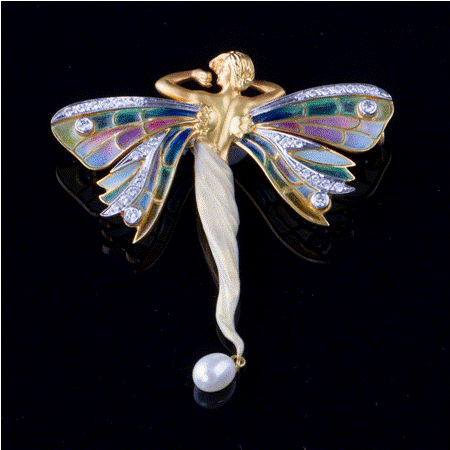 |
Meanwhile, in 1871 Charles Payne had died and the following year William's second son, George Septimus, moved into the Abingdon business. By 1883 George Septimus had also taken over the running of the Wallingford firm from his father William Payne. In 1888 Payne & Son of Abingdon had purchased the business of Alderman Sheard at 131 High Street Oxford. George Septimus opened the shop with effect from 1st January 1889. In 1892 he moved to Oxford and in 1894 the Abingdon shop was closed. In 1901 George Septimus Payne took over the Tunbridge Wells shop from Helen Payne, widow of his elder brother. He placed his own eldest son, William Ewart Payne, in charge and his grandson Douglas joined the firm in 1946. Douglas Payne took over completely after the death of his father in 1961. This was also the year that the new Payne & Son hallmark was registered at the London Assay Office, with its two distinctive lines above and below the letters P&S. Michael Payne joined his father in 1981. Although Douglas Payne has retired he continues to take an active interest in the trade. Today the firm goes from strength to strength continuing to provide antique, period and modern silver. Antique jewellery also still features strongly, with Victorian and Edwardian pieces complimenting more recent work, including special commissions. Swiss watches , clocks and other fine giftware are also on display in the showrooms in Tunbridge Wells. |
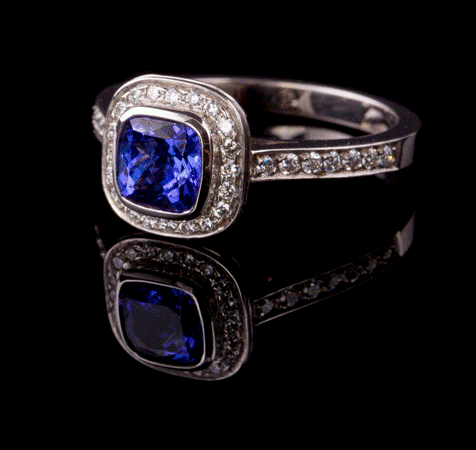 |
Hence Payne & Son welcomes the new millennium as not many firms can claim to have traded in four different centuries! The Tunbridge Wells shop, with the outside clock projecting out onto the street, is itself a familiar sight. "Clock House", or 37 High Street, is one of a terrace built by William Willicombe. He ran Bramah's workshop in Tunbridge Wells and had won the esteem of Decimus Burton. His work is in the contemporary classical Victorianate style.
The Post Office used the shop as the setting for its national advertising campaign in 1987. They wished to show that they stayed open longer than banks and so needed a typical High Street with a clock. The problem is that Tunbridge Wells High Street has no Post Office and so a sign had to be bolted onto the wall, along with the provision of a dummy post box. Even P.H.S. of the Times Diary noticed the deception!
|
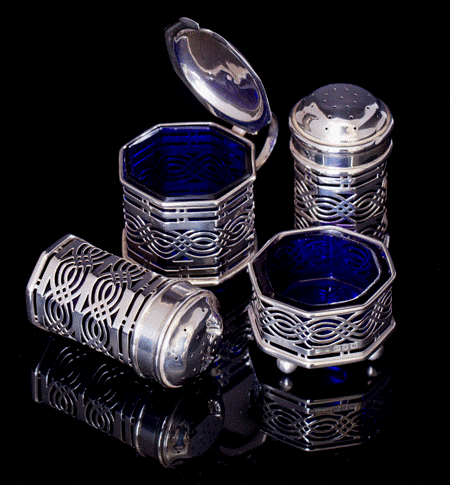 |
Payne & Son have been jewellers and silversmiths in Tunbridge Wells for over one hundred and thirty years. However, the family has been in the jewellery trade since the eighteenth century. |

